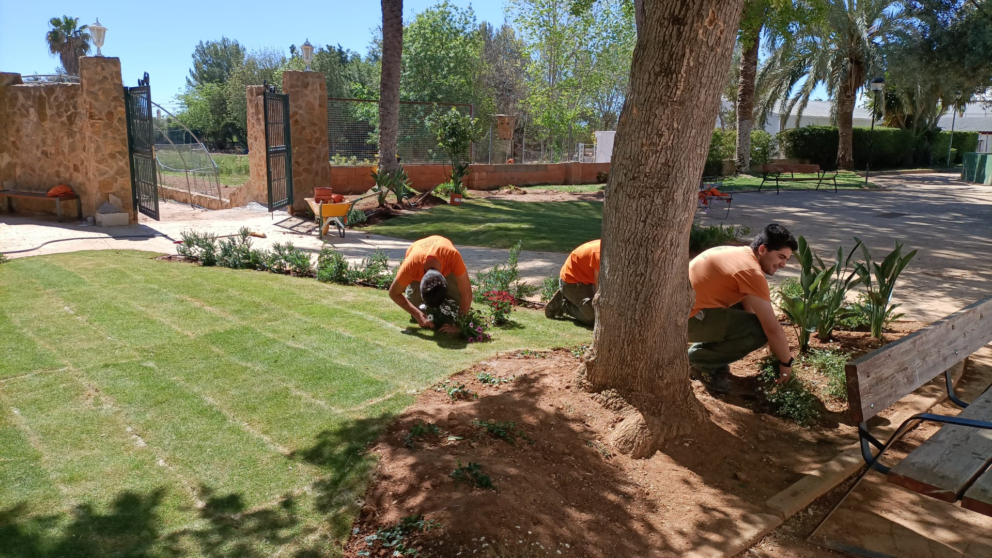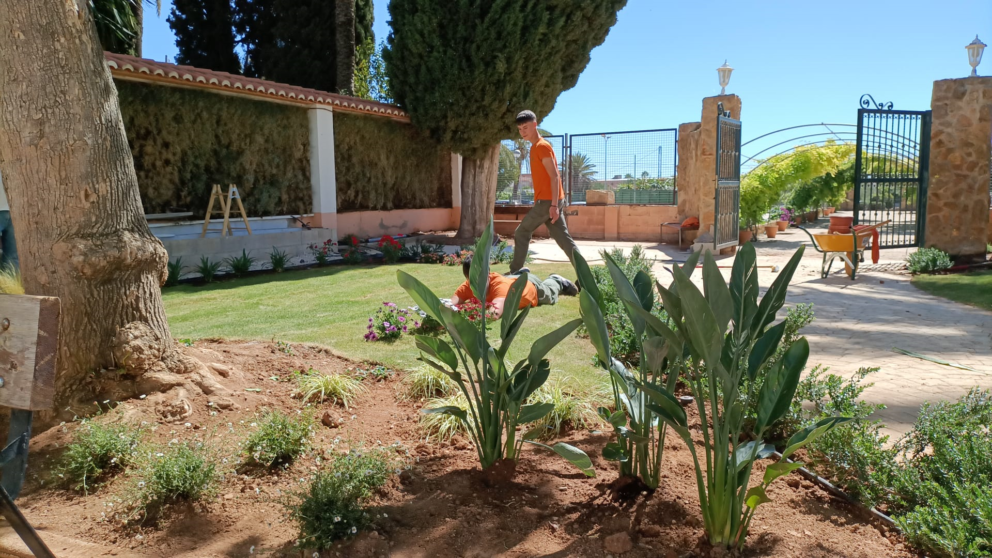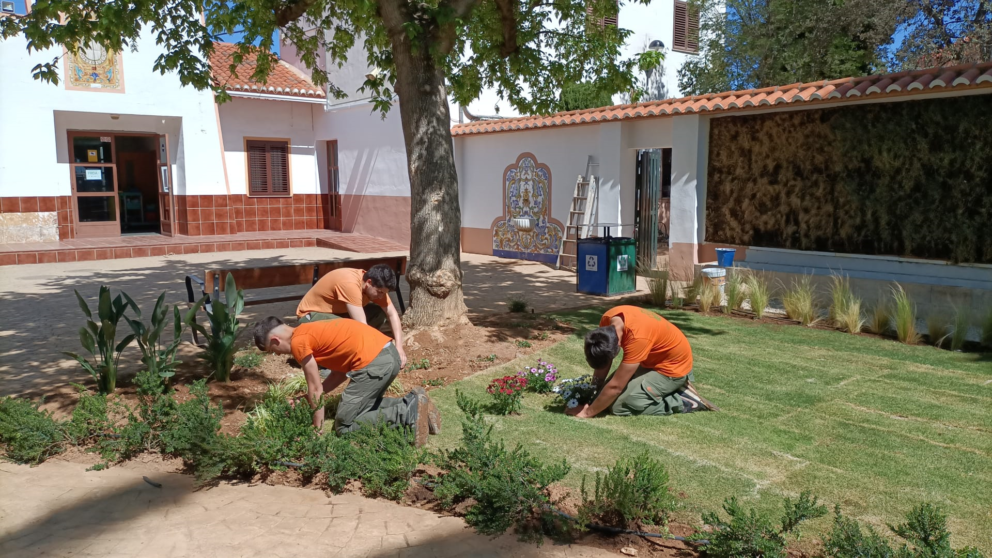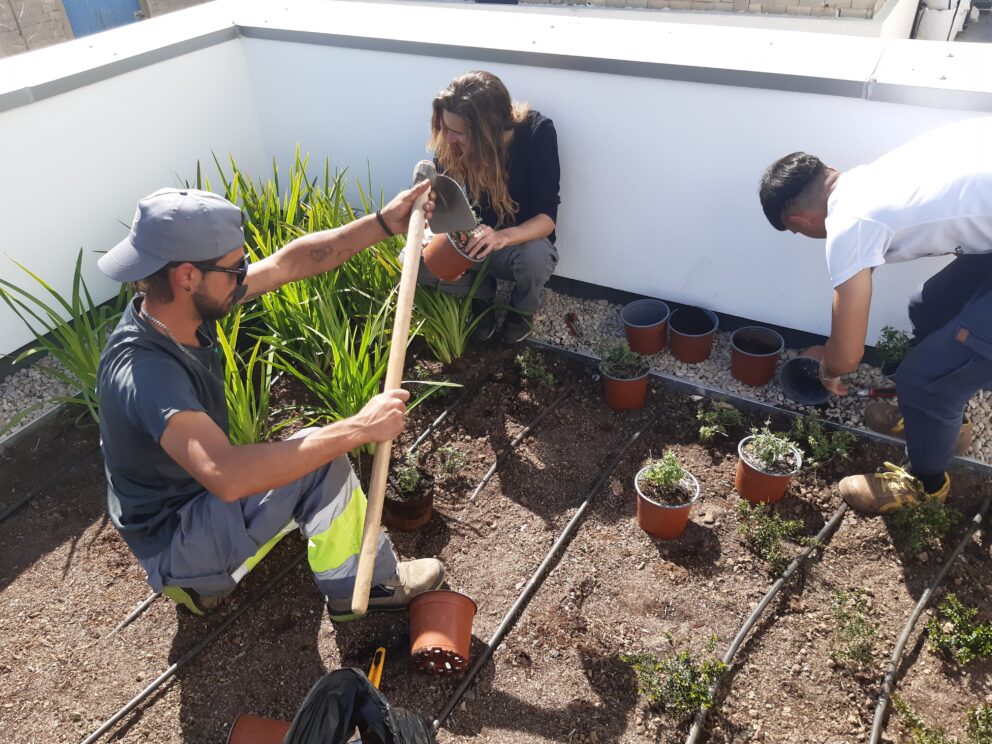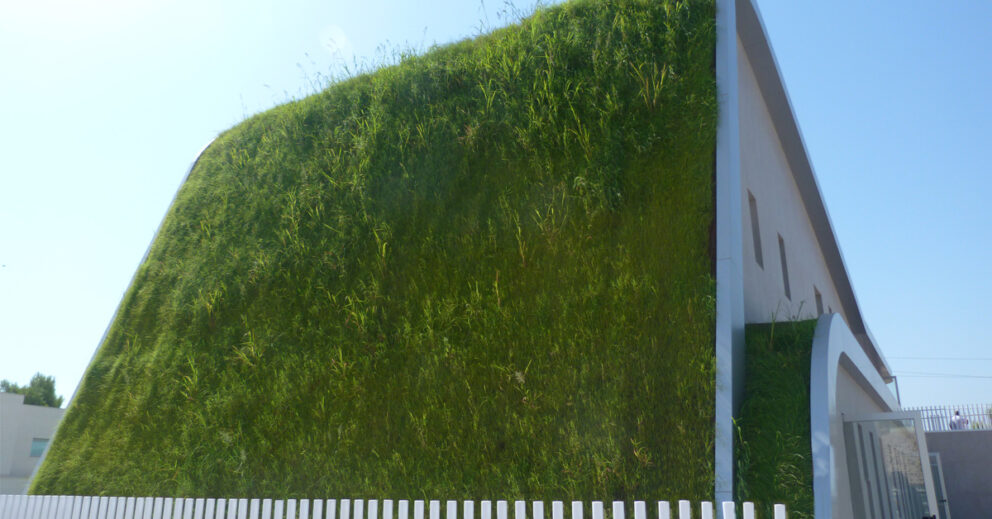First-year students of the Intermediate Vocational Training in Gardening and Floristry have left their green mark at the heart of EFA. As part of their final course challenge, named "Urban Greening," they have transformed a degraded area of the school into an oasis of biodiversity and sustainability.
As María Gómez, the teacher leading the activity, points out, “this challenge involves active methodologies characteristic of EFA, many of them learned and applied thanks to our participation in the EPLUG project.”
Developing skills to make cities greener
This challenge consisted of developing skills and competencies to make cities greener, covering topics such as green roofs, green walls, drainage in pavements, and tree management, among others. In the case of the action carried out at EFA, the students had to perform the terrain’s drainage and create a complete drainage system with drain pipes, they have placed a printed concrete that does not stagnate water thanks to the tubes, and design the space to make it accessible and green.
For the latter, the students chose to work with low-maintenance Mediterranean species and installed Zoysia sod. As the teacher notes: “This sod is very resistant to drought and salinity, and an irrigation system with a rotator has also been installed, which allows greater efficiency and a better control of water consumption.”
Conservation of urban spaces
Thanks to all these actions, the students gain knowledge about the conservation of urban spaces in their own school, as if it were a miniature park. Something that the teacher highlights about this work is that the students “will be able to see the evolution of the different species for themselves every day.”
In the next phase of the challenge, the students will carry out reseeding with dwarf flower meadow, also known as a Japanese meadow. The advantage is that it can be mowed and left like a lawn or allowed to grow to between 20 and 30 centimeters and bloom in spring.
Environmental responsibility
Finally, it is planned to finish covering the pools with manually cut stone, an ornamental touch that will enhance the beauty of the space. For María Gómez, this ornamental detail “not only beautifies the school environment but also teaches students the importance of environmental responsibility and sustainable urban planning.”

